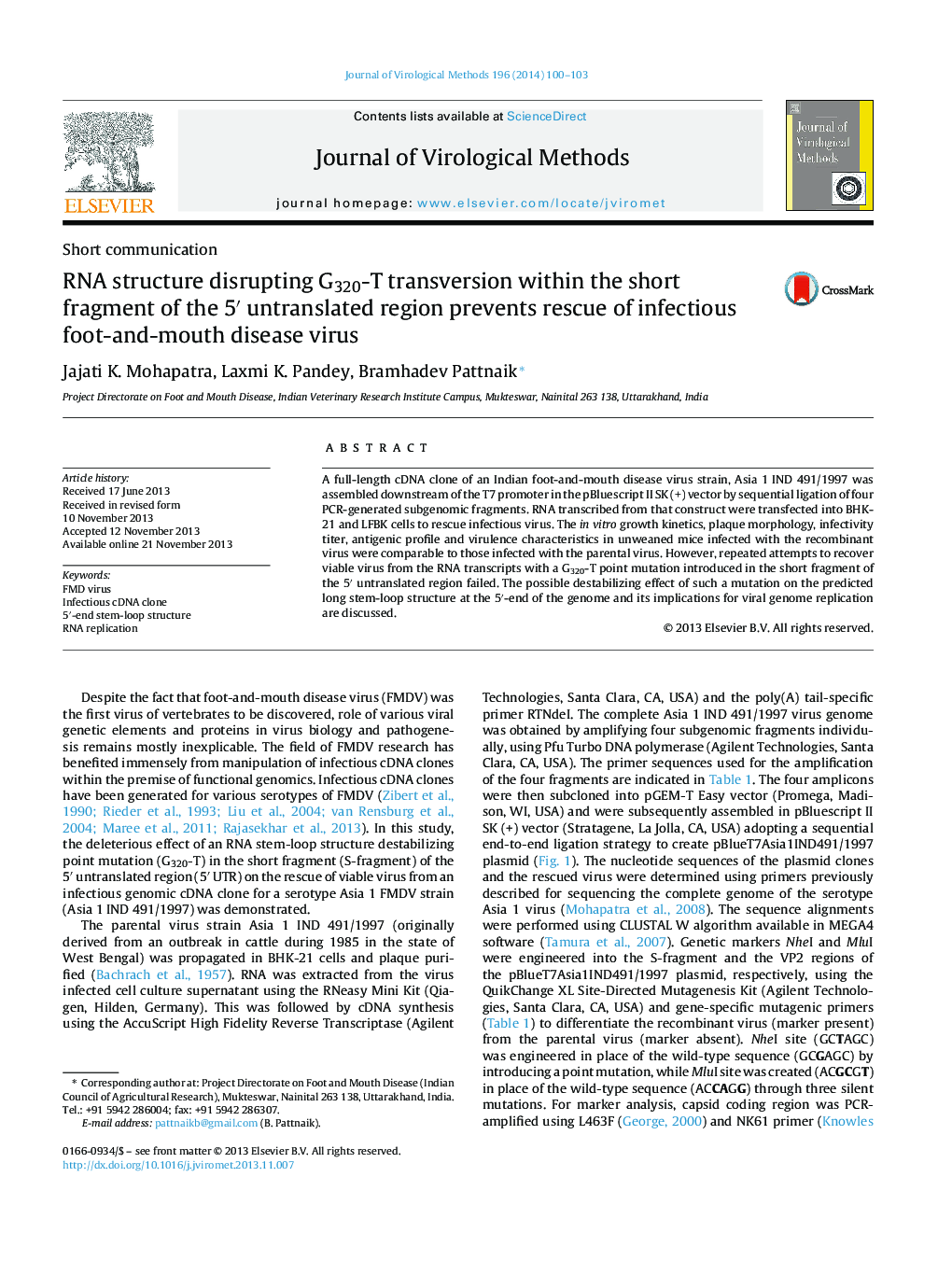| Article ID | Journal | Published Year | Pages | File Type |
|---|---|---|---|---|
| 6133888 | Journal of Virological Methods | 2014 | 4 Pages |
Abstract
A full-length cDNA clone of an Indian foot-and-mouth disease virus strain, Asia 1 IND 491/1997 was assembled downstream of the T7 promoter in the pBluescript II SK (+) vector by sequential ligation of four PCR-generated subgenomic fragments. RNA transcribed from that construct were transfected into BHK-21 and LFBK cells to rescue infectious virus. The in vitro growth kinetics, plaque morphology, infectivity titer, antigenic profile and virulence characteristics in unweaned mice infected with the recombinant virus were comparable to those infected with the parental virus. However, repeated attempts to recover viable virus from the RNA transcripts with a G320-T point mutation introduced in the short fragment of the 5â² untranslated region failed. The possible destabilizing effect of such a mutation on the predicted long stem-loop structure at the 5â²-end of the genome and its implications for viral genome replication are discussed.
Related Topics
Life Sciences
Immunology and Microbiology
Virology
Authors
Jajati K. Mohapatra, Laxmi K. Pandey, Bramhadev Pattnaik,
